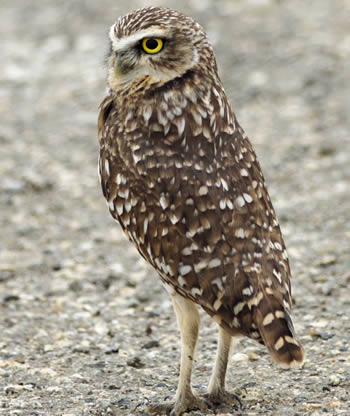Unless changes are made, a public-private partnership for airport
facilities at Brown Field would not protect the burrowing owl population
on Otay Mesa in southern San Diego County.

The San Diego MSCP, adopted by the City of San Diego in 1997, requires careful preserve assembly over time, ensuring that new development projects either set aside appropriate land on site or mitigate off site, or a combination of the two. Local governments hold the permits for “take” of species, and it is their responsibility to implement correctly. State and federal agencies have no control on the level of an individual project, though as a last resort can pull permits on a broader scale if things go awry. Typically, local governments work with the agencies proactively on MSCP-consistent solutions.
This system broke down when the Metropolitan Airpark project proposed overt non-compliance with the MSCP by failing to meet requirements to protect the burrowing owl, a “covered species” under the plan. The population of owls is already tenuous on Otay Mesa. Yet the project was designed with solar panels placed over the owl habitat along with deficient off-site mitigation. EHL submitted comments on the draft Environmental Impact Report and urged more on site conservation. We are communicating with the applicant on making such changes.
While the County of San Diego has contributed to a comprehensive burrowing owl strategy, it is now essential that the City also commit to this effort. The MSCP is a cornerstone of the quality of life in the region, and for a population of an MSCP covered species to become extirpated would be a terrible precedent. The City was the lead agency in originally developing the MSCP and it is worrisome that “institutional memory” may be faltering just 15 years on. EHL will seek to educate new policy-makers on the value of this program, both for economic development and for wildlife.


